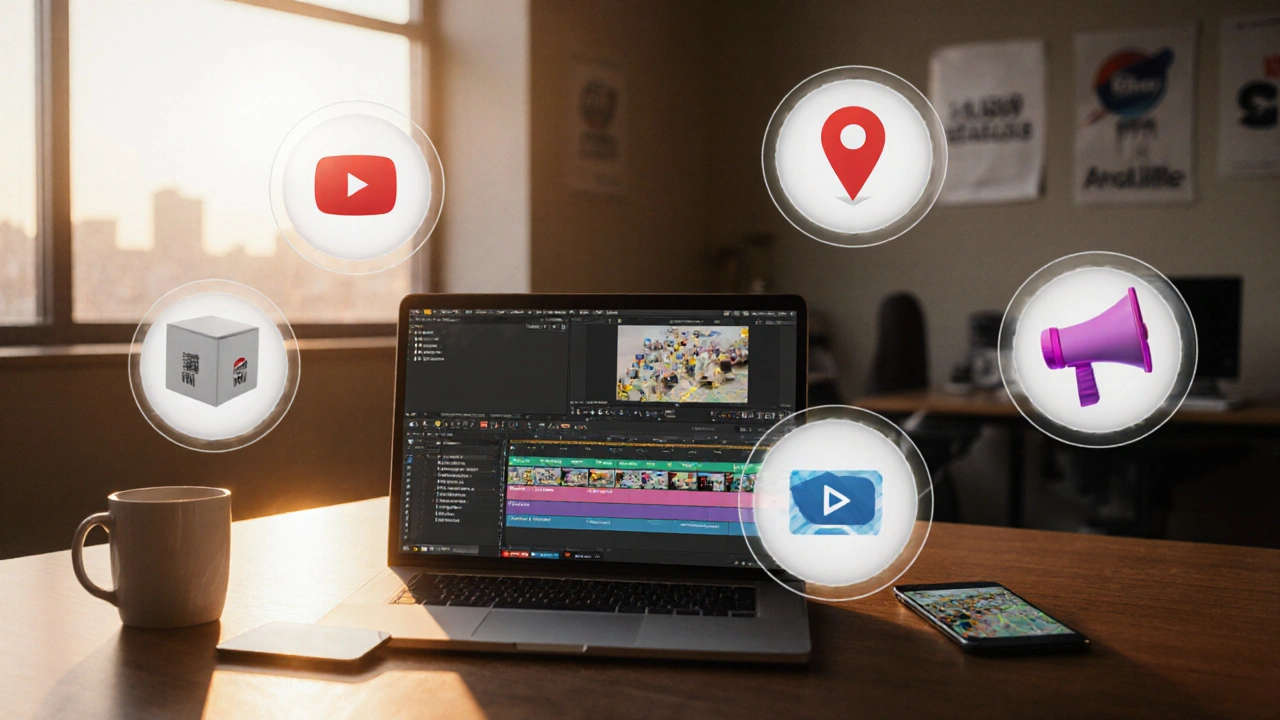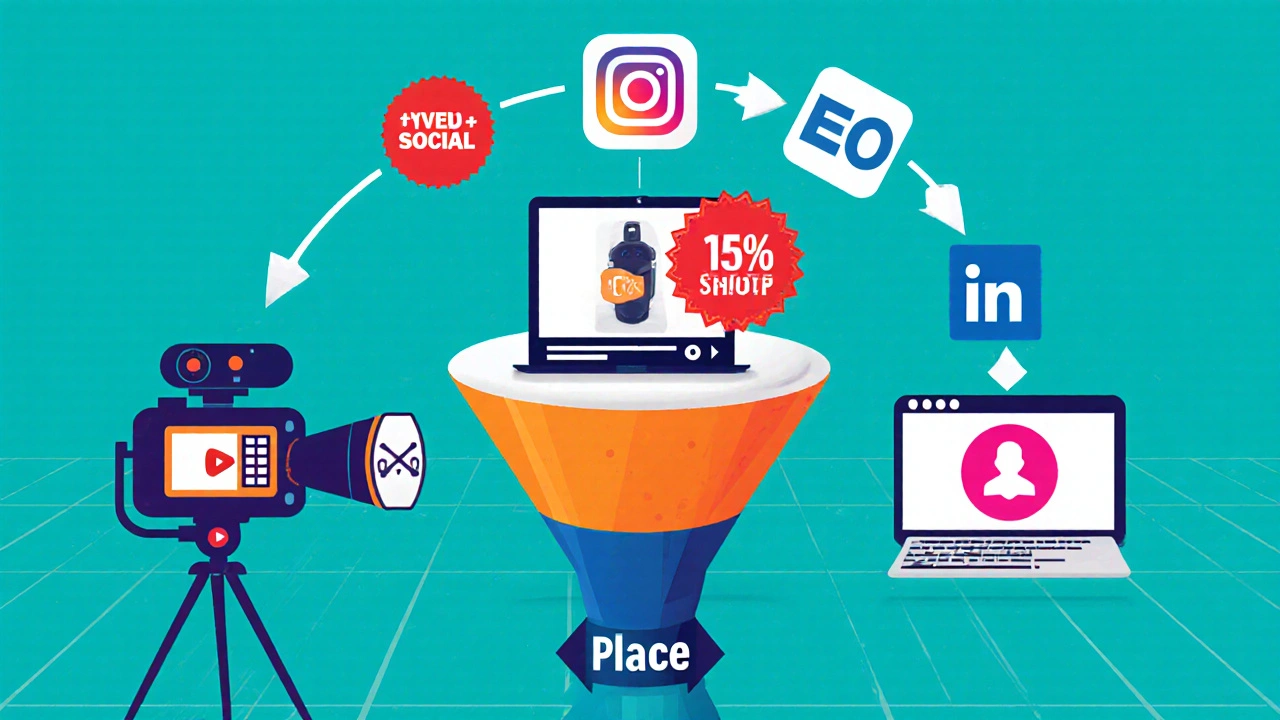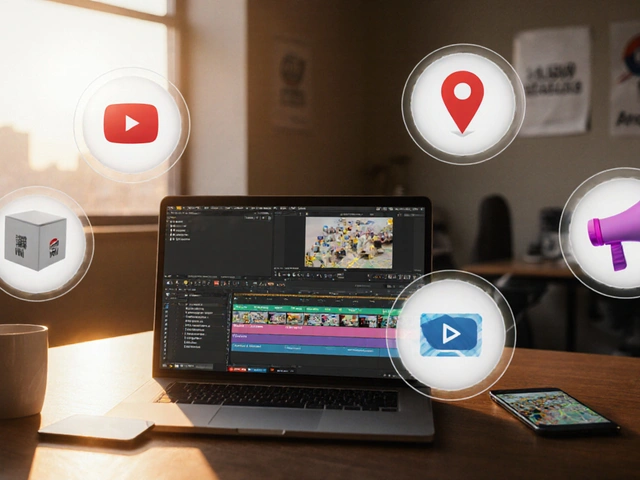8
Understanding the 4 Ps of Marketing and How They Power Video Marketing

4 Ps Video Marketing Audit Tool
Audit Your Video Marketing Strategy
Rate each item on a scale of 1-5 (1 = Not met, 5 = Strongly met). This tool helps you identify strengths and opportunities in your video marketing approach.
Product
Price
Place
Promotion
When marketers talk about the 4 Ps of marketing - also called the marketing mix - they’re referring to the four core elements that shape any strategy: Product, Price, Place, and Promotion. Understanding the 4 Ps of marketing helps you design campaigns that resonate, convert, and grow.
Why the 4 Ps Still Matter in 2025
Even as AI, short‑form video, and social commerce dominate, the fundamentals haven’t changed. Businesses that tweak each P to fit modern channels see higher ROI. For example, a SaaS company that bundles a free video tutorial (Product) with a tiered subscription (Price) and distributes it via YouTube Shorts (Place) while running targeted retargeting ads (Promotion) often outperforms a competitor that ignores one of those levers.
Product: What You’re Selling and How It Fits Video
The Product isn’t just a physical item; it’s any value proposition you deliver - a service, an experience, or even a brand promise. In video marketing, the product can be the video itself, the story it tells, or the call‑to‑action embedded within it.
- Core features - Identify the key benefit your video must communicate.
- Differentiators - Highlight what makes your visual style or message unique.
- Format choice - Decide between explainer, testimonial, or behind‑the‑scenes based on audience need.
Data from Wyzowl (2024) shows that 85% of buyers watch a product video before making a decision. That statistic alone makes product‑centric video a non‑negotiable.
Price: Communicating Value Through Video
The Price element covers the actual cost, perceived value, and pricing tactics. Video can influence all three.
- Showcase ROI - Use case‑study videos that quantify savings or earnings.
- Anchor pricing - Present a premium package first, then reveal a more affordable option.
- Scarcity cues - Add limited‑time offers within the video to trigger urgency.
According to HubSpot (2023), video‑based price explanations increase conversion rates by 19% compared to static text.

Place: Where Your Video Lives
Place isn’t a physical shelf; it’s the distribution channel. Choosing the right platform maximizes reach and relevance.
- YouTube Shorts - Ideal for quick demos and brand awareness.
- Instagram Reels - Works well for lifestyle and fashion visual storytelling.
- LinkedIn native video - Best for B2B thought leadership.
Statista reports that in Q22025, short‑form video accounted for 62% of global video consumption, underscoring the need to place content where audiences spend time.
Promotion: Getting Eyes on Your Video
Promotion covers all tactics used to amplify the video. From paid ads to organic sharing, each method should align with the other Ps.
- Paid social - Targeted video ads on Facebook or TikTok drive immediate traffic.
- SEO for video - Optimize titles, descriptions, and transcripts for Google’s video index.
- Influencer partnerships - Leverage creators whose audience matches your target market.
The Marketing Mix framework reminds us that promotion can’t exist in a vacuum; the message, price point, and channel must all support each other.
Integrating the 4 Ps with Video Marketing Strategies
Here’s a step‑by‑step recipe that ties each P to a video‑first campaign:
- Define the product story: Draft a script that highlights the core benefit.
- Set price messaging: Decide whether the video will emphasize discount, premium value, or free trial.
- Select placement: Choose YouTube Shorts for a younger demographic or LinkedIn for enterprise buyers.
- Plan promotion: Allocate budget to paid boost, schedule organic posts, and add SEO tags.
- Measure & iterate: Track watch time, click‑through rate, and conversion to fine‑tune each P.
By treating the video as both the product and a promotion vehicle, you close the loop between creative and commerce.

Quick Reference: The 4 Ps at a Glance
| P | Key Question | Video‑Specific Tactics | Typical Metric |
|---|---|---|---|
| Product | What value does the video deliver? | Story‑driven script, high‑quality visuals, clear CTA | Average watch time, completion rate |
| Price | How is price perceived through the video? | ROI case study, price anchoring, limited‑time offers | Click‑through to pricing page, conversion rate |
| Place | Where will the audience find the video? | Platform selection, thumbnail optimization, playlist placement | Impressions, platform‑specific reach |
| Promotion | How will the video be amplified? | Paid social boosts, SEO‑friendly titles, influencer shares | Engagement rate, share count, ad ROAS |
Common Pitfalls & Pro Tips
Pitfall #1: Treating the video as a one‑off ad rather than an integral product piece. Tip: Re‑use the same footage across ads, landing pages, and email newsletters.
Pitfall #2: Ignoring price psychology. Tip: Use visual cues like bold numbers or countdown timers to emphasize savings.
Pitfall #3: Publishing on the wrong platform. Tip: Match content length and style to platform norms - 60 seconds for TikTok, 2‑3 minutes for YouTube tutorials.
Pitfall #4: Under‑investing in promotion. Tip: Allocate at least 20% of your video budget to paid distribution; organic reach alone is rarely enough.
Next Steps for Marketers
- Audit your current video assets against the 4 Ps checklist.
- Pick one upcoming campaign and map each P to a concrete video tactic.
- Set up tracking: UTM parameters for promotion, heat‑maps for product engagement.
- Run a 2‑week A/B test-swap price messaging or placement-and measure lift.
- Document lessons learned and refine your future video‑marketing brief.
Frequently Asked Questions
What is the difference between the 4 Ps and the 7 Ps of marketing?
The original 4 Ps focus on product‑centric businesses. The 7 Ps add People, Process, and Physical Evidence to address services and experience‑based offerings.
Can the 4 Ps be applied to non‑profit video campaigns?
Yes. Replace “Price” with “Funding Goal” or “Donation Ask” and the framework still guides messaging, placement, and promotion.
How often should I revisit my 4 Ps strategy?
At least quarterly, or whenever you launch a new product, change pricing, enter a new market, or shift platform algorithms.
Is there a quick way to audit my video content against the 4 Ps?
Create a checklist with four columns (Product, Price, Place, Promotion) and rate each video 1‑5 on relevance, clarity, distribution fit, and promotional support.
Do modern AI tools replace the need for a human‑crafted 4 Ps plan?
AI can suggest optimizations, but the strategic choices about product value, pricing psychology, and channel mix still require human insight.











Tiffany Ho
October 8, 2025 AT 08:06I really like how the post breaks down the 4 Ps and ties them to video marketing. It makes the whole thing easy to digest for anyone new to the topic. Keep sharing helpful guides like this!
michael Melanson
October 9, 2025 AT 11:53The checklist format is super handy. I can see myself using it when planning my next video campaign. Thanks for the clear layout.
lucia burton
October 10, 2025 AT 15:40Looking at the integration of product, price, place, and promotion within a video framework, it’s evident that synergy across these pillars is essential for ROI maximization. When you articulate the core benefit in the opening ten seconds, you secure viewer attention and set a value proposition baseline. Embedding unique differentiators later in the narrative bolsters brand positioning and reduces churn risk. Aligning the video format-whether it’s an explainer, testimonial, or case study-with the target persona’s consumption habits drives higher engagement metrics. Incorporating pricing psychology techniques, such as anchoring and scarcity cues, can accelerate conversion velocity, especially when paired with a compelling visual call‑to‑action. Optimizing thumbnails, titles, and descriptions for platform‑specific SEO not only improves discoverability but also aligns with algorithmic preferences, ensuring that the content surfaces to the right audience segment. Multi‑channel promotion-leveraging both organic reach and paid amplification-creates a funnel effect, guiding prospects from awareness to consideration. Embedding transcripts and closed captions enhances accessibility while boosting keyword density for SEO. The audit tool’s 1‑5 rating system provides a quantifiable feedback loop, allowing marketers to iteratively improve their video assets. By systematically evaluating each of the 4 Ps, teams can identify blind spots, allocate resources efficiently, and ultimately drive higher lifetime customer value. Consistency across product messaging, pricing transparency, platform optimization, and promotional tactics forms the backbone of a resilient video marketing strategy. Moreover, the integration of analytics and tracking mechanisms enables real‑time performance assessment, fostering data‑driven decision making. This holistic approach ensures that each video not only tells a story but also serves as a strategic lever within the broader marketing mix. In practice, aligning the video’s tone with brand voice while maintaining platform‑appropriate length maximizes viewer retention and shares. Finally, regular audits using the provided tool keep the strategy agile, adapting to market shifts and emerging platform features.
Denise Young
October 11, 2025 AT 19:26Oh great, another checklist that promises to solve all our video woes-because we all know a three‑column table will magically turn mediocre content into a blockbuster. But seriously, the “place” section you mentioned? That’s just a fancy way of saying, “post it where people actually look.” And the “promotion” bullet points? If you’re not cross‑posting on at least five platforms, you’re basically hiding your video in a basement. Still, the audit layout is neat enough that we can at least pretend we have a plan.
Sam Rittenhouse
October 12, 2025 AT 23:13Reading through the audit feels like stepping onto a stage where every element-product, price, place, promotion-is a spotlight waiting to shine. I’m moved by how the tool encourages creators to craft narratives that resonate, to embed calls‑to‑action that echo long after the video ends. It’s a dramatic reminder that marketing isn’t just a transaction, it’s a story we share with the world.
Peter Reynolds
October 14, 2025 AT 03:00Nice breakdown, helps keep things balanced. The checklist is clear enough to follow without feeling overloaded.
Fred Edwords
October 15, 2025 AT 06:46Excellent structure, concise, logically ordered, and, importantly, punctuated with precision; the audit’s design facilitates quick assessment, thorough analysis, and actionable insight.
Sarah McWhirter
October 16, 2025 AT 10:33You know, they don’t tell you that the 4 Ps are actually a covert code used by the elite to control our attention-product, price, place, promotion-pretty much the four horsemen of the media apocalypse. But hey, if you’re comfortable living in the matrix, this audit will keep you nicely chained.
kelvin kind
October 17, 2025 AT 14:20Cool tool.
Ian Cassidy
October 18, 2025 AT 18:06I appreciate the blend of straightforward language with industry-standard terms; it makes the audit accessible while still feeling professional.